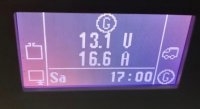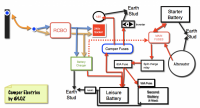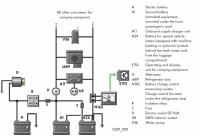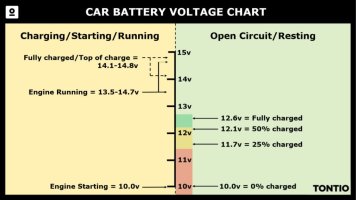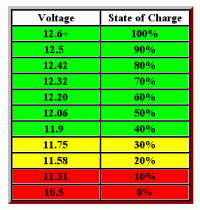Kris Emery
OK I am trying to understand what the status of my batteries are from the control panel. With the motor off the image I get is:
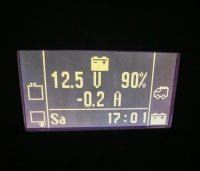
Now I assume the upper central panel reflects the status of the motor battery. That is 90% capacity voyage 12.5V discharge current 0.2 amp. So far so good?
Now the second battery image (bottom right corner) according to the hand book is "Bar display in the battery capacity symbol". Does any one know
(a) which battery is this referring to? Motor or Leisure?
(b) Does the the symbol change if the capacity is lower (just like the water tank symbols?
I ask because I would like to monitor the leisure batteries' condition.
Advice please? Thanks

Now I assume the upper central panel reflects the status of the motor battery. That is 90% capacity voyage 12.5V discharge current 0.2 amp. So far so good?
Now the second battery image (bottom right corner) according to the hand book is "Bar display in the battery capacity symbol". Does any one know
(a) which battery is this referring to? Motor or Leisure?
(b) Does the the symbol change if the capacity is lower (just like the water tank symbols?
I ask because I would like to monitor the leisure batteries' condition.
Advice please? Thanks



